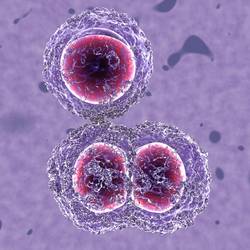Home > Press > EU project targets MRSA infections
 |
| MRSA bacteria © Shutterstock |
Abstract:
Hospitals and other healthcare facilities house Staphylococcus aureus bacteria (i.e. 'staph') that trigger MRSA (methicillin-resistant Staphylococcus aureus) infections. The problem is that not only is MRSA resistant to antibiotics, but it can also be fatal. A team of European researchers is ready to tackle the problem by finding ways to reduce MRSA infection rates in hospitals worldwide. The project is supported by the EU under the Seventh Framework Research Programme with EUR 5 million in funding.
EU project targets MRSA infections
Europe | Posted on November 17th, 2008'The spread of drug-resistant germs such as MRSA is a major public health concern,' explained Dr Tofail Syed from the University of Limerick. 'A significant element of the MRSA problem arises from the use of conventional textiles such as hospital gowns, curtains, beddings and pillow covers. As a result, hospital sterility has been a major concern in countries like Ireland, Germany and Belgium.'
The group will tackle this problem by using nanotechnology to develop MRSA-resistant textiles that are self- sterilising and developed to kill bacteria. In this way, hospitals have a means of fighting bacterial infection.
Experts believe that drug-resistant microbes like MRSA cause infections in 1 in 10 people in European hospitals. Each year, more than 3 million people in the EU develop hospital-based infections, and around 50 000 patients die from them.
'In southern and western Europe, over 40% of hospitals have significant problems with the MRSA super bug,' Professor Syed noted. 'We are confident of redressing this statistic through our research and development of MRSA-resistant textiles.'
Besides targeting MRSA-resistant textile development, the three-year project is spotlighting three other areas of European healthcare affecting life quality: plaque-resistant cardiovascular stents (metal structures that are placed on the inside of blocked arteries); urinary stents that cause less stone formation; and bone implants that heal faster.
'The project addresses four major areas of European healthcare that affect the quality of life of European citizens and cost European states considerable amounts of money,' commented Mr Liam Brown, head of Research Support at the University of Limerick. 'In particular, cardiovascular disease is the cause of half of (the) deaths in Europe, accounting for in excess of 2 million deaths per year. Arterial thrombosis contributes significantly and the project will directly address this issue.'
The University of Limerick will lead European agencies and enterprises in this project.
'The awarding of the EUR 5 million contract to the University of Limerick is a testament of Ireland's role as a leading R&D centre for the worldwide biomedical sector,' underlined Dr Edmond Magner, head of the Materials and Surface Science Institute (MSSI) at the University of Limerick.
####
For more information, please click here
Copyright © European Commission
If you have a comment, please Contact us.Issuers of news releases, not 7th Wave, Inc. or Nanotechnology Now, are solely responsible for the accuracy of the content.
| Related News Press |
News and information
![]() Simulating magnetization in a Heisenberg quantum spin chain April 5th, 2024
Simulating magnetization in a Heisenberg quantum spin chain April 5th, 2024
![]() NRL charters Navy’s quantum inertial navigation path to reduce drift April 5th, 2024
NRL charters Navy’s quantum inertial navigation path to reduce drift April 5th, 2024
![]() Discovery points path to flash-like memory for storing qubits: Rice find could hasten development of nonvolatile quantum memory April 5th, 2024
Discovery points path to flash-like memory for storing qubits: Rice find could hasten development of nonvolatile quantum memory April 5th, 2024
Govt.-Legislation/Regulation/Funding/Policy
![]() NRL charters Navy’s quantum inertial navigation path to reduce drift April 5th, 2024
NRL charters Navy’s quantum inertial navigation path to reduce drift April 5th, 2024
![]() Discovery points path to flash-like memory for storing qubits: Rice find could hasten development of nonvolatile quantum memory April 5th, 2024
Discovery points path to flash-like memory for storing qubits: Rice find could hasten development of nonvolatile quantum memory April 5th, 2024
![]() Chemical reactions can scramble quantum information as well as black holes April 5th, 2024
Chemical reactions can scramble quantum information as well as black holes April 5th, 2024
Nanomedicine
![]() New micromaterial releases nanoparticles that selectively destroy cancer cells April 5th, 2024
New micromaterial releases nanoparticles that selectively destroy cancer cells April 5th, 2024
![]() Good as gold - improving infectious disease testing with gold nanoparticles April 5th, 2024
Good as gold - improving infectious disease testing with gold nanoparticles April 5th, 2024
![]() Researchers develop artificial building blocks of life March 8th, 2024
Researchers develop artificial building blocks of life March 8th, 2024
Announcements
![]() NRL charters Navy’s quantum inertial navigation path to reduce drift April 5th, 2024
NRL charters Navy’s quantum inertial navigation path to reduce drift April 5th, 2024
![]() Discovery points path to flash-like memory for storing qubits: Rice find could hasten development of nonvolatile quantum memory April 5th, 2024
Discovery points path to flash-like memory for storing qubits: Rice find could hasten development of nonvolatile quantum memory April 5th, 2024
|
|
||
|
|
||
| The latest news from around the world, FREE | ||
|
|
||
|
|
||
| Premium Products | ||
|
|
||
|
Only the news you want to read!
Learn More |
||
|
|
||
|
Full-service, expert consulting
Learn More |
||
|
|
||








